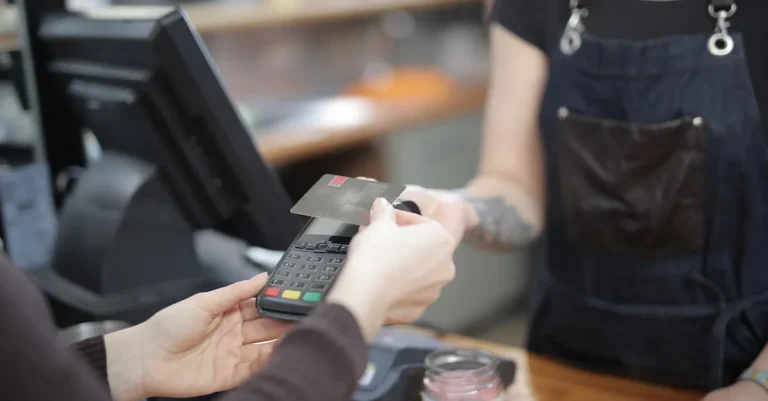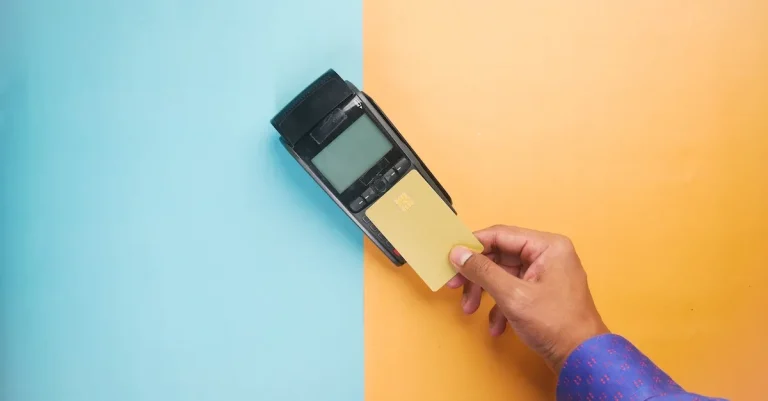Can You Buy Cooking Oil With Ebt? Snap Rules And Best Oils To Choose
Cooking oil is an essential pantry staple used for frying, baking, roasting, and more. If you receive SNAP benefits, you may wonder if cooking oils are eligible for purchase with your EBT card.
If you’re short on time, here’s a quick answer to your question: Yes, you can buy cooking oil with EBT. Oils are considered SNAP-eligible grocery items. The USDA does not restrict or ban purchasing cooking oils.
In this in-depth guide, we’ll cover everything you need to know about buying cooking oil with your food stamp benefits. You’ll learn which types of oils are best for different cooking methods, how to shop smartly for oils on a budget, and tips for maximizing nutrition within the SNAP program.
EBT Card Guidelines: What Groceries Can You Buy with SNAP?
Staple Foods and Groceries Allowed by the USDA
When it comes to using an EBT card for SNAP benefits, there are specific guidelines set by the USDA regarding the types of groceries that can be purchased.
The main objective of the Supplemental Nutrition Assistance Program (SNAP) is to provide low-income individuals and families with access to nutritious food options.
Therefore, SNAP benefits can be used to purchase staple foods and groceries that are essential for a healthy diet.
Staple foods such as fruits, vegetables, meat, poultry, fish, dairy products, and bread are all eligible for purchase with an EBT card. These foods are considered essential for a well-balanced diet and provide important nutrients needed for overall health.
Additionally, SNAP benefits can be used to buy other staple items like rice, pasta, beans, and canned goods. It’s important to note that SNAP benefits cannot be used to purchase prepared foods, hot meals, or alcohol.
The focus is on providing individuals and families with the means to purchase ingredients and prepare their own meals at home, promoting healthier eating habits and self-sufficiency.
If you’re unsure whether a specific item can be purchased with SNAP benefits, it’s always a good idea to check the USDA’s official website or contact your local SNAP office for clarification. These resources can provide you with the most up-to-date information on eligible food items and any recent changes to the program’s guidelines.
Non-Food Items You Can’t Get with EBT
While SNAP benefits can be used to purchase a wide variety of food items, it’s important to understand that there are certain non-food items that cannot be purchased with an EBT card. These items include household supplies, cleaning products, pet food, cigarettes, and alcohol.
The purpose of SNAP is to assist individuals and families in accessing nutritious food options, so non-food items are not included in the program. However, it’s worth mentioning that some states have implemented separate programs that allow the purchase of certain non-food items with SNAP benefits.
For example, the SNAP Electronic Benefit Transfer website explains that in some states, EBT cards can be used to buy seeds and plants for growing food at home.
If you’re unsure about whether a specific non-food item can be purchased with SNAP benefits, it’s best to consult the official USDA guidelines or contact your local SNAP office for clarification.
Are Cooking Oils Eligible for Purchase with SNAP Benefits?
All Cooking Oils Qualify for EBT
Good news for food stamp recipients – cooking oils are indeed eligible for purchase with SNAP benefits! Whether you prefer olive oil, vegetable oil, canola oil, or any other type of cooking oil, you can rest assured that you can use your EBT card to buy them.
This is great news for individuals and families who rely on SNAP benefits to help make ends meet. Cooking oils are a staple in many households and are essential for various culinary purposes, from sautéing and frying to baking and dressing salads.
No State Bans on Buying Oil with Food Stamps
It’s important to note that there are no state bans in place regarding the purchase of cooking oils with food stamps. This means that regardless of the state you reside in, you have the freedom to use your SNAP benefits to buy the cooking oils of your choice.
The SNAP program aims to provide recipients with the ability to purchase nutritious and essential food items and cooking oils are considered a vital part of a balanced diet.
According to the United States Department of Agriculture (USDA), SNAP benefits can be used to purchase any food item that is intended for human consumption, including cooking oils. This means that you can use your EBT card at grocery stores, supermarkets, and even online retailers that accept SNAP benefits to buy cooking oils.
It’s worth mentioning that while cooking oils are eligible for purchase with SNAP benefits, it’s always a good idea to make informed choices when selecting the best cooking oil for your needs.
Opting for healthier options, such as olive oil or canola oil, can provide additional health benefits due to their higher content of monounsaturated fats. These fats are known to improve heart health and reduce the risk of chronic diseases.
So, the next time you go grocery shopping with your EBT card, feel confident knowing that you can stock up on cooking oils to enhance your culinary adventures while staying within the guidelines of the SNAP program.
A Guide to Choosing the Best Cooking Oils
Best Oils for Baking, Frying, and More
When it comes to cooking oils, there are numerous options available, each with its own unique characteristics and uses. For baking, oils with a neutral flavor and high smoke point are ideal. Canola oil and vegetable oil are popular choices for baking as they have a mild taste and can withstand high temperatures without smoking.
If you’re looking to fry foods, oils with a higher smoke point are necessary to prevent them from breaking down and becoming unhealthy. Peanut oil, sunflower oil, and avocado oil are all excellent choices for frying due to their high smoke points and ability to hold up well at high temperatures.
For sautéing and stir-frying, consider using oils like olive oil or coconut oil. These oils have lower smoke points than some others, but their flavors can enhance the taste of your dishes. They also offer health benefits, such as being rich in monounsaturated fats (olive oil) or medium-chain triglycerides (coconut oil).
Consider Smoke Point, Flavor, and Nutrition
When choosing a cooking oil, it’s important to consider factors such as smoke point, flavor, and nutrition. The smoke point is the temperature at which an oil begins to smoke and break down, releasing harmful compounds and creating an unpleasant taste.
Different oils have different smoke points, so it’s important to choose an oil that can withstand the cooking method you plan to use.
Flavor is another important consideration. Some oils, like olive oil or sesame oil, have distinct flavors that can enhance your dishes. Others, like canola oil or vegetable oil, have a more neutral taste that won’t overpower the flavors of your ingredients.
Lastly, consider the nutritional profile of the oil. Some oils, like coconut oil, are high in saturated fats, while others, like olive oil, are high in monounsaturated fats. This can affect your overall health and well-being, so it’s important to choose oils that align with your dietary goals and needs.
For more detailed information on cooking oils and their characteristics, you can visit Healthline’s guide to healthy cooking oils. They provide in-depth analysis and comparisons of various oils, including their smoke points, flavor profiles, and nutritional benefits.
Shopping Smart: Affording Quality Oils on an EBT Budget
When it comes to purchasing cooking oil with EBT (Electronic Benefits Transfer), there are certain rules and guidelines that need to be followed. However, with a little bit of smart shopping, it is possible to afford quality oils that are both nutritious and delicious.
In this article, we will explore some strategies to help you make the most out of your EBT budget when buying cooking oil.
Compare Prices and Look for Discounts
One of the first things you can do to shop smart with your EBT card is to compare prices and look for discounts. Different stores may offer different prices for the same type of cooking oil, so it’s worth taking the time to do some research.
Look for sales, promotions, or discounts that can help you save money on your oil purchases. Additionally, some stores may offer loyalty programs or coupons that can further reduce the cost.
Buy Store Brands Instead of Name Brands
Another way to stretch your EBT budget when buying cooking oil is to opt for store brands instead of name brands. Store brands often offer similar quality at a lower price compared to their more well-known counterparts.
Don’t be afraid to try out different store brands and compare their quality to find the best option that fits your taste and budget. You might be pleasantly surprised by the savings without compromising on the quality of your cooking oil.
Purchase Oils in Bulk When Possible
If you have the storage space, buying cooking oils in bulk can be a cost-effective strategy. Many stores offer discounts when you purchase larger quantities of oil. This can help you save money in the long run, especially if you frequently use cooking oil in your recipes.
Just make sure to check the expiration dates and store the oil properly to maintain its freshness and quality.
Remember, it’s important to check the guidelines and restrictions regarding EBT purchases in your state or region. While cooking oil is generally allowed, there may be specific rules regarding the types or brands that can be purchased.
By shopping smart and following the rules, you can enjoy quality oils while staying within your budget.
Getting the Most Nutrition from SNAP with Healthy Fats
When it comes to using your SNAP benefits for cooking oil, you’ll be glad to know that it is indeed allowed. The Supplemental Nutrition Assistance Program (SNAP) permits the purchase of cooking oils with an Electronic Benefit Transfer (EBT) card.
This means that you can use your benefits to buy cooking oils that are approved by the program. It’s important to understand the guidelines and make informed choices to ensure you get the most nutrition from your SNAP benefits.
Use Oils for Cooking Instead of Butter or Lard
One way to make your meals healthier and stretch your SNAP benefits further is to opt for cooking oils instead of traditional fats like butter or lard. Oils such as olive oil, canola oil, and vegetable oil provide a healthier alternative, as they are lower in saturated fat.
Saturated fats have been linked to an increased risk of heart disease, so choosing oils can be a great way to improve your overall health. Plus, cooking oils can add a delicious flavor to your dishes!
Include Omega-3 Rich Oils Like Olive Oil
When selecting cooking oils with your SNAP benefits, consider including omega-3-rich oils like olive oil in your shopping list. Olive oil is known for its heart-healthy benefits and is a staple in the Mediterranean diet. It contains monounsaturated fats, which are considered a healthier type of fat.
These fats can help lower bad cholesterol levels and reduce the risk of heart disease. Incorporating olive oil into your cooking can be a simple and tasty way to boost your nutrition.
Measure Portions to Control Calories
While oils are a healthy source of fats, it’s still important to consume them in moderation to control your calorie intake. Oils are calorie-dense, so it’s essential to measure your portions when cooking. Using too much oil can quickly increase the calorie content of your meals.
The American Heart Association recommends using no more than 2-3 tablespoons of oil per day. By measuring your portions carefully, you can enjoy the benefits of cooking oils while keeping your calorie intake in check.
Remember, always consult with a healthcare professional or registered dietitian to determine the best oils and portion sizes for your specific dietary needs. By making informed choices and utilizing your SNAP benefits wisely, you can ensure that you’re getting the most nutrition from your cooking oils while staying within your budget.
Conclusion
Cooking oils are kitchen staples that provide healthy fats and make it easy to create delicious, budget-friendly meals. With no restrictions on purchasing oils using EBT, SNAP recipients can stock up on these essential ingredients.
Take advantage of this flexibility in the SNAP program by choosing quality cooking oils to use in tasty, nutritious recipes. Carefully shopping for deals and comparing brands can help you keep costs low.











